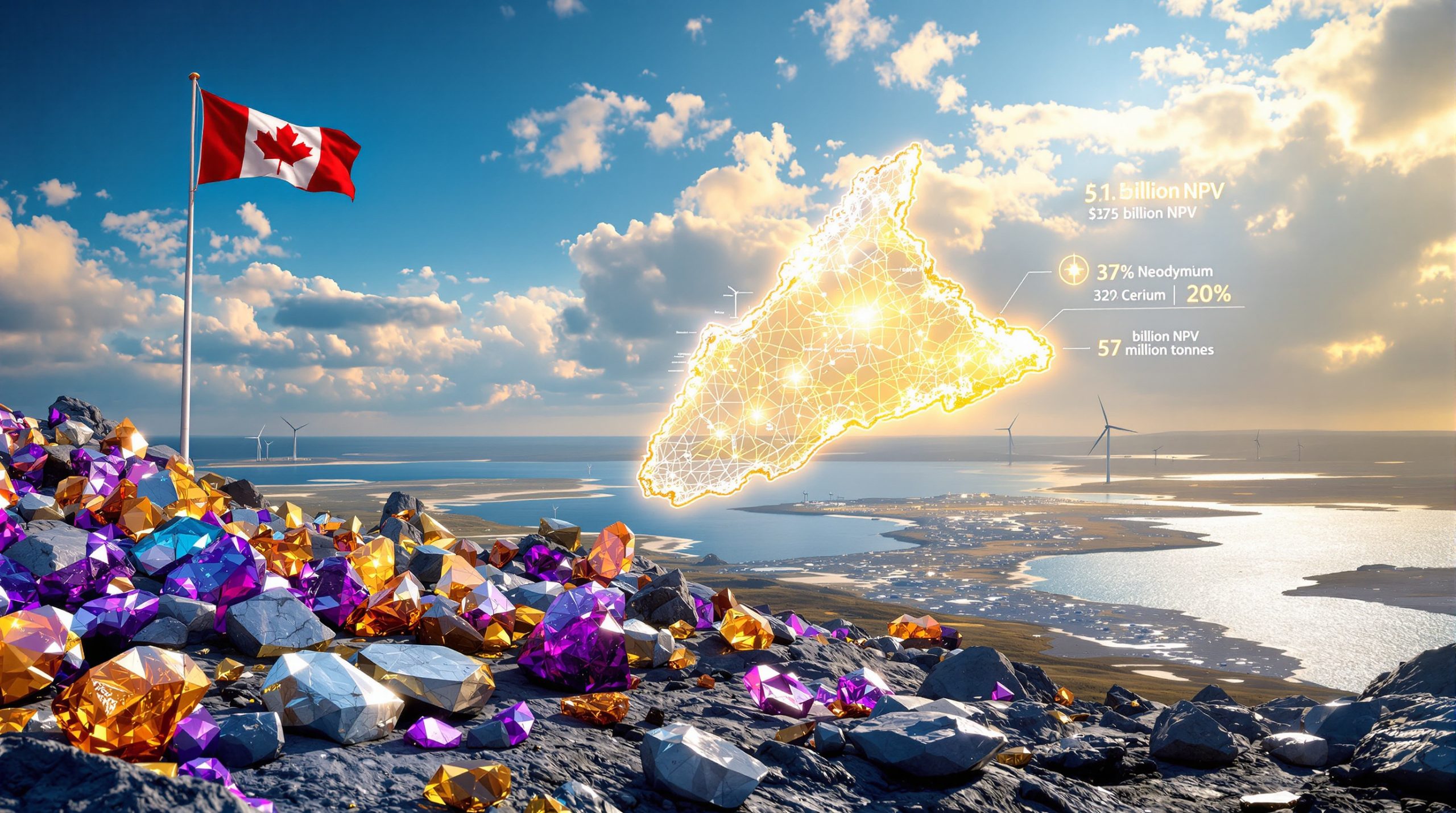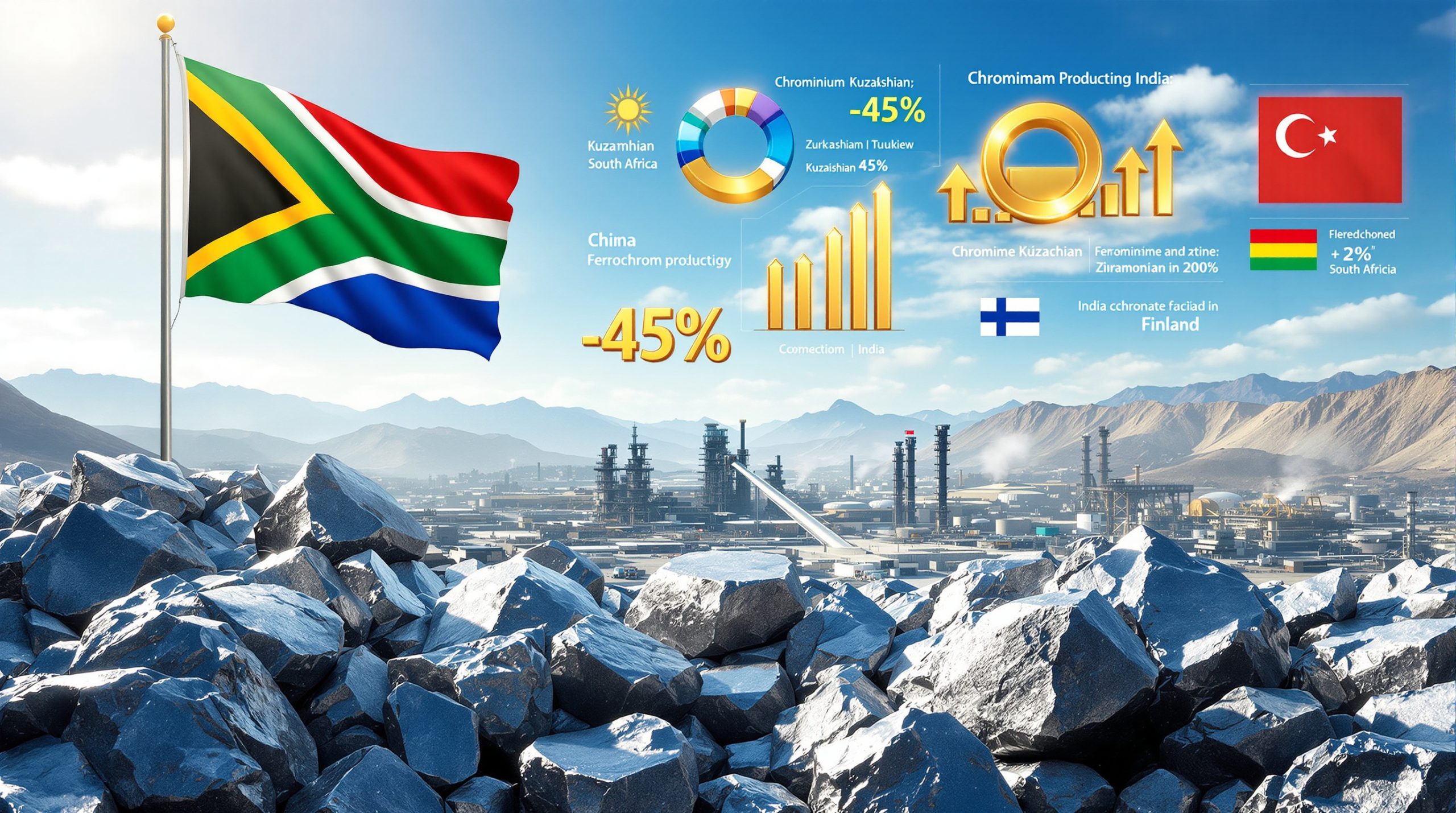What Is Driving the Current Uranium Market?
Global Nuclear Expansion Accelerating
China's nuclear ambitions are transforming the global uranium landscape, with the country currently operating 57-58 gigawatts of nuclear capacity according to the World Nuclear Association. Their aggressive expansion continues with 35-36 reactors under construction, significantly outpacing all other nations combined.
In a demonstration of unprecedented commitment, Chinese authorities approved 10 new reactor constructions in a single day in April 2024, as reported by the National Energy Administration of China. This approval surge signals their determination to reach their adjusted target of 150 gigawatts by 2035 (scaled back from the original 200 gigawatt goal).
The economics of China's nuclear program give it a substantial competitive advantage. Their reactors are being built in just 5 years at approximately $3 billion per reactor—roughly one-third the cost and half the construction time of comparable Western projects according to the World Nuclear Association's country profile data.
"China's 10-reactor approval day signals unprecedented nuclear ambition… their inventory isn't commercial stockpiles but military/strategic reserves." — Justin Huhn, Uranium Insider
Supply Constraints Creating Market Tightness
Kazakhstan, the world's largest uranium producer, faces significant production challenges that are tightening global supply. The development of the strategically important Budenovskoya 6 and 7 deposits (projected to produce over 15 million pounds annually) has been delayed until at least 2027, according to Kazatomprom's 2023 Annual Report.
A critical bottleneck is the new sulfuric acid plant required for production expansion, which hasn't yet started construction. This infrastructure delay pushes the timeline to mid-2027 at the earliest, with Kazatomprom confirming in their H1 2024 investor call that there's a 12-month lag between acid plant completion and production increases.
These constraints mean Kazakhstan's production will likely hit only the low end of their guidance (25,000 tons U3O8) for 2024, as stated in their Q1 production update. Further complicating the global supply picture, Russian production faces its own challenges with flooding at the Priargunsky mine reducing 2024 output by approximately 15%, according to Rosatom's Q1 2024 operational update.
The uranium mining halt at Paladin Energy's Namibian operations until 2025 adds to these supply concerns. The Kazatomprom-Rosatom joint venture at Budenovskoya also means that 49% of this future production is already allocated to Russia, removing it from Western markets even when production eventually begins.
Shifting Buyer Behavior
Perhaps the most telling indicator of market tightness is the dramatic shift in uranium buyer behavior. Utilities have historically participated in the spot market for less than 20% of total volume, primarily relying on long-term contracts. However, according to UxC's Q1 2024 Uranium Market Report, utilities now account for over 70% of spot market volume year-to-date.
This unprecedented shift signals growing supply concerns among end users. TradeTech's Uranium Weekly Spot Report from May 2024 highlighted one RFP for 500,000 pounds that went unfilled for over 6 weeks—an almost unheard-of situation in previous market cycles.
"Kazatomprom's 10-year inventory lows mean they can't afford to repurchase uranium despite shortages." — Justin Huhn, Uranium Insider
Increasing "carry trade" activity—where utilities secure future supply through financial intermediaries via swaps and options—further demonstrates the growing urgency to lock in uranium supplies before prices escalate further.
How Are Price Dynamics Evolving in the Uranium Market?
Spot vs. Term Price Divergence
The uranium market continues to show a notable divergence between spot and term prices, creating opportunities for strategic market participants. Spot prices recovered from their March 2024 low of $63.50 to exceed $70.50 by May, according to UxC's Weekly Spot Price Tracker.
Meanwhile, term prices have remained remarkably stable at approximately $80 for several months, as tracked by TradeTech's Long-Term Price Indicator. This stability reflects the market power shifting to producers, who are maintaining firm pricing with $75-80 floor prices for new contracts.
More revealing is the evolution of contract ceiling prices, which according to Cameco's Q1 2024 earnings call are now pushing into the mid-$130s for late-decade delivery. This widening spread between floor and ceiling prices indicates growing consensus about future supply challenges.
The market is following its historical pattern of 8-12 month up-moves followed by similar periods of consolidation, though with higher lows established after each cycle.
"Term prices are sticky—producers won't sell below $75 even if spot dips… utilities now face a 'take it or leave it' market." — Justin Huhn, Uranium Insider
Market Volatility Creating Investment Opportunities
Recent uranium market volatility has created compelling entry points for strategic investors. The April 2024 "liberation day" market decline (when certain restrictions on uranium sales expired) drove significant pullbacks across the sector despite fundamentals remaining intact.
During this correction, sector leader Cameco (NYSE: CCJ) hit $35, down significantly from previous highs above $45. Similarly, Denison Mines (TSX: DML) reached lows of C$1.10-1.20 from previous highs exceeding C$2.30.
Technical indicators like the Relative Strength Index (RSI) reached oversold conditions of 20-25 during these drawdowns, according to Bloomberg's "Uranium Equities Technical Analysis" from May 2024. These extreme readings have historically preceded significant recoveries in the uranium sector.
The Sprott Physical Uranium Trust (SPUT) demonstrated institutional confidence during this volatility by raising $25 million at a premium to Net Asset Value in May 2024, according to their press release.
Changing Supply-Demand Fundamentals
The market's underlying structure has evolved significantly over recent months. Motivated sellers from previous quarters—including traders, hedge funds, and the Kazakhstan A&U fund—have largely exited their positions. UxC's Q1 2024 Market Review specifically noted that the Kazakhstan fund's 2.2 million pounds no longer overhang the market.
Kazatomprom itself faces a supply dilemma, with 10-year inventory lows limiting its ability to capitalize on higher prices by selling from stockpiles. Despite being the world's largest producer, the company remains hesitant to repurchase uranium despite shortages, instead focusing on maximizing realized prices from its diminishing production.
Meanwhile, utility demand continues to increase with limited available supply, creating a fundamental tightness that underpins the market regardless of short-term price movements.
What Political and Regulatory Developments Are Impacting Uranium?
U.S. Nuclear Policy Transformation
The United States is signaling a potential sea change in nuclear energy policy. The current administration has outlined goals to quadruple U.S. nuclear capacity by 2050, representing the most ambitious nuclear expansion plan in decades.
Multiple executive orders are in development to accelerate nuclear deployment, with the White House Fact Sheet from May 2024 highlighting proposed reforms to Nuclear Regulatory Commission (NRC) approval processes. These reforms aim to reduce approval timelines from the current 4-5 years to 2-3 years while maintaining safety standards.
The current NRC approval process requires approximately 2 million page applications at a cost approaching $500 million, according to the NRC's 2023 Annual Report to Congress. This regulatory burden has been a significant impediment to new nuclear construction in the United States.
In a notable shift, the Department of Defense is potentially becoming more involved in nuclear expansion, viewing nuclear energy as critical to national security and energy independence.
"The administration views nuclear as critical to energy independence—we're streamlining regulations without compromising safety." — Christopher Wright, Energy Secretary
Industry Advocacy and Financial Incentives
The Nuclear Energy Institute (NEI) is actively pushing to maintain investment tax credits established under recent legislation, according to their 2024 Policy Priorities document. These incentives are crucial for making new nuclear builds economically viable in competitive energy markets.
Utilities are increasingly advocating for additional financial support mechanisms to enable new construction, recognizing that upfront capital costs remain the largest hurdle to nuclear expansion.
Industry consolidation efforts like The Nuclear Company are bringing stakeholders together to restart stalled projects. Santee Cooper's April 2024 press release revealed over 60 responses to their Request for Proposal for recommencing construction at the VC Summer plant in South Carolina, demonstrating renewed interest in completing partially built nuclear facilities.
Perhaps most significantly, major technology companies are showing unprecedented interest in nuclear ownership and development, viewing reliable, carbon-free electricity as essential to their operations, particularly for power-intensive applications like data centers and artificial intelligence.
Geopolitical Considerations
Despite escalating tensions between Russia and Western nations, Russian uranium has maintained its exemption from recent rounds of economic sanctions and US uranium tariff threats. This exemption highlights the strategic importance of nuclear fuel and the West's continued dependence on Russian nuclear services.
However, ongoing uncertainty regarding future Russia-West relations is prompting utilities to diversify their supply chains. This shift is complicated by the fact that Kazakhstan's uranium production is increasingly flowing to China and Russia, with the World Nuclear Association's "Nuclear Fuel Report" (2023) noting that approximately 60% of Kazakh uranium now moves eastward.
Western utilities are responding by seeking more secure, geopolitically stable supply chains, even at premium prices. This prioritization of security over cost is a fundamental shift in procurement strategy that supports higher uranium prices.
How Can Investors Navigate the Uranium Market Volatility?
Strategic Portfolio Construction
Successful uranium investors are maintaining diversification across resource sectors while allocating core positions to highest-conviction, lowest-risk uranium investments. Cantor Fitzgerald's "Uranium Equity Sensitivity" report (2024) indicates that producers typically demonstrate 1.5-2.5x leverage to uranium prices, while developers show 3-5x sensitivity.
Keeping substantial cash reserves for market pullback opportunities has proven effective during recent volatility. These liquidity reserves allow investors to upgrade portfolio quality during drawdowns, accumulating tier-one assets at discounted valuations.
The Sprott Physical Uranium Trust (SPUT) has emerged as a lower-volatility alternative for exposure to uranium prices, trading at a 5% discount to Net Asset Value according to their May 2024 investor presentation, despite strong fundamentals.
"Sell low-conviction speculations during pullbacks—double down on producers like Cameco with $75 floors." — Justin Huhn, Uranium Insider
Technical Trading Approaches
Sophisticated investors are leveraging options strategies during extreme market moves to enhance returns while managing risk. According to the CBOE's "Options Trading Strategies" guide (2023), vertical call spreads can provide 3-5x leverage on 30% underlying moves in uranium equities.
Technical indicators like the Relative Strength Index (RSI) have proven particularly valuable in identifying extreme oversold conditions that often precede significant rebounds. H.C. Wainwright's "Uranium Investment Guide" (2023) suggests that buying developers at less than 0.8x price-to-NAV ratios provides a substantial margin of safety during market corrections.
The most successful market participants balance long-term core holdings with tactical trading positions, using market volatility as a mechanism to enhance overall returns rather than as a reason to exit the sector.
Risk Management Techniques
Establishing a significant margin of safety in entry points is crucial in the notoriously volatile uranium sector. The concept extends beyond simple valuation metrics to include balance sheet strength, management quality, and project economics at various uranium price points.
Psychological factors often lead to selling at market bottoms, particularly among retail investors. Understanding the distinction between fundamental drivers versus short-term price action helps investors maintain conviction through turbulent periods.
Geographic diversification across mining jurisdictions provides protection against country-specific regulatory or political risks. The Global X Uranium ETF's 2024 rebalance suggests a portfolio allocation of approximately 40% Canada, 30% Kazakhstan, and 20% U.S. exposure as a balanced approach.
Evaluating Company-Specific Opportunities
Legacy producers like Cameco are maintaining strong pricing power, refusing to sign contracts below $75/lb regardless of spot market fluctuations. Their established operations and contracted sales provide stability while offering upside exposure to rising uranium prices.
Development-stage companies offer higher risk/reward profiles, with projects like Denison Mines' Phoenix deposit demonstrating the potential for outsized returns. Denison recovered from C$1.10 in 2020 to C$2.30 in 2024 as its projects advanced toward production decisions.
Physical uranium trusts have secured significant institutional investment at premiums to NAV, with Uranium Participation Corp reporting 25% year-to-date returns via its physical holdings according to its TSX listing (U).
Geographic diversification across projects in Canada, Australia, and the United States helps mitigate country-specific risks while providing exposure to different types of uranium deposits and development timelines.
What Are the Long-Term Uranium Market Projections?
Supply Gap Widening
The uranium market trends show a structural supply deficit that continues to widen. UxC's "2024 Uranium Market Outlook" projects a 40 million pound annual deficit by 2030 based on known mine development timelines and reactor requirements.
Major growth projects are facing significant delays beyond initial expectations. Australia's Honeymoon Project, for example, has been delayed until 2027 according to Boss Energy's ASX announcement, adding to the list of productions failing to materialize on schedule.
With limited new production coming online before 2027-2028, existing supplies will be stretched increasingly thin. Russian domestic needs are consuming increasing portions of their production, with Rosatom's 2023 Annual Report indicating that 40% of Russian production is now consumed domestically rather than exported.
Kazatomprom's production constraints are likely to persist given infrastructure limitations and joint venture commitments with Russian and Chinese partners, removing significant portions of the world's largest producer's output from Western markets.
Demand Acceleration Underway
China's nuclear fleet expansion is driving substantial new uranium demand, requiring at least 8 new reactors annually according to the China Nuclear Energy Association's 14th Five-Year Plan. This represents approximately 12 million additional pounds of annual uranium demand from China alone.
Western utilities are beginning their contracting cycle for 2029-2035 deliveries, with CRU's "Global Uranium Contracting" report (2024) indicating that approximately 60% of 2030 utility demand remains uncovered by existing contracts.
Increasing utility activity in the spot market is a leading indicator of future term contracting, as utilities typically secure spot material before committing to long-term purchases. This pattern suggests an acceleration of contract signings in coming quarters.
Seasonal patterns documented in UxC's "Seasonality in Uranium Markets" (2023) suggest increased activity in Q3-Q4 of each year, potentially driving 15% average price increases during these traditional contracting periods.
"The supply response is too little, too late—$80 is the new floor." — Tim Gitzel, Cameco CEO
Price Trajectory Implications
Term price stabilization around $80 is creating a foundation for the next leg higher in uranium prices. Morgan Stanley's "Uranium: The New Oil" report (2024) projects a price trajectory from the current $75 floor to $130+ ceiling by 2030 based on supply-demand fundamentals.
Spot price volatility often masks the underlying supply-demand fundamentals, creating opportunities for knowledgeable investors to accumulate positions during temporary price weakness.
Contract floor prices have established a minimum $75-80 price level, with producers unwilling to sign long-term agreements below these thresholds regardless of short-term market fluctuations.
Ceiling prices continue pushing into the $130+ range for late-decade delivery, reflecting growing consensus about the structural challenges in bringing sufficient new production online to meet demand.
The Department of Energy's "Nuclear Fuel Supply Chain Assessment" (2023) highlights additional concerns about U.S. conversion shortfalls projected for 2026, potentially creating another chokepoint in the nuclear fuel cycle that could drive prices higher.
Investment Timeline Considerations
Near-term seasonal factors could create summer opportunities for accumulation before the traditional fall contracting season begins. Historical patterns suggest July-August often represent relative lulls in market activity.
Mid-term (6-18 months) contracting cycle acceleration is likely as utilities become increasingly concerned about securing sufficient fuel for the latter part of this decade.
Long-term (2-5 years) fundamentals point to a widening supply gap as demand growth continues, particularly from China and emerging nuclear nations, while new production remains constrained.
Strategic positioning now could capitalize on the 2027-2030 market tightening that appears increasingly inevitable based on reactor construction timelines versus mine development schedules.
FAQ: Common Questions About Uranium Market Investing
How does market volatility in uranium compare to other commodities?
Uranium has historically experienced more extreme volatility than many other commodities due to its relatively small market size (approximately $10-12 billion annually), limited number of buyers and sellers, and significant influence from geopolitical factors. While gold might fluctuate 15-20% annually, uranium can move 50%+ in similar timeframes.
This heightened volatility creates both challenges and opportunities for
Ready to Stay Ahead of the Next Major Mineral Discovery?
Don't miss potentially transformative ASX mineral announcements with Discovery Alert's proprietary Discovery IQ model, delivering real-time alerts and actionable insights directly to your inbox. Explore how significant discoveries can generate substantial returns by visiting Discovery Alert's dedicated discoveries page and begin your 30-day free trial today.




